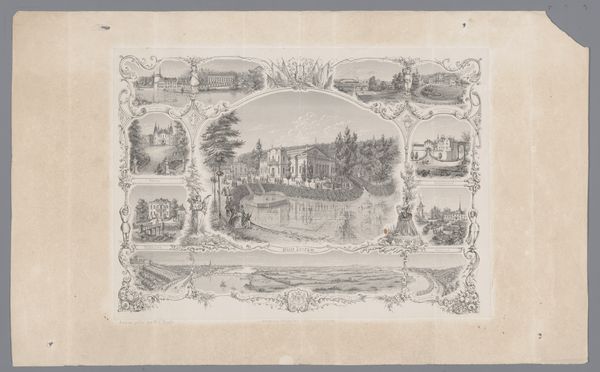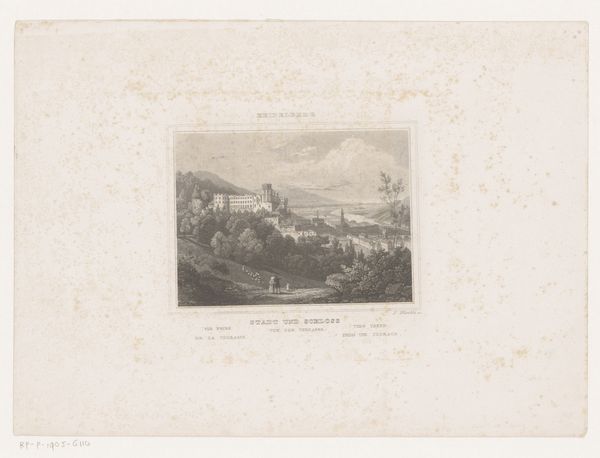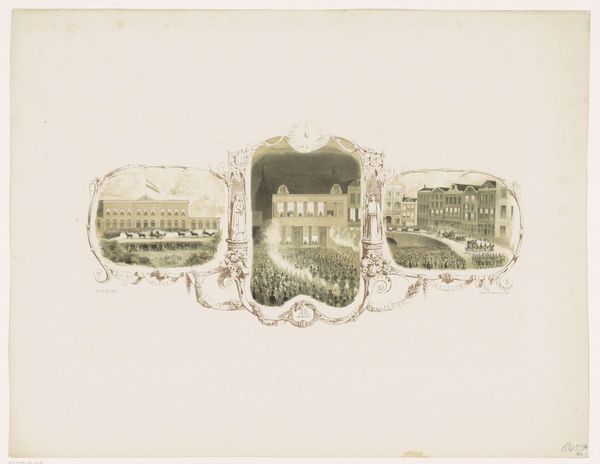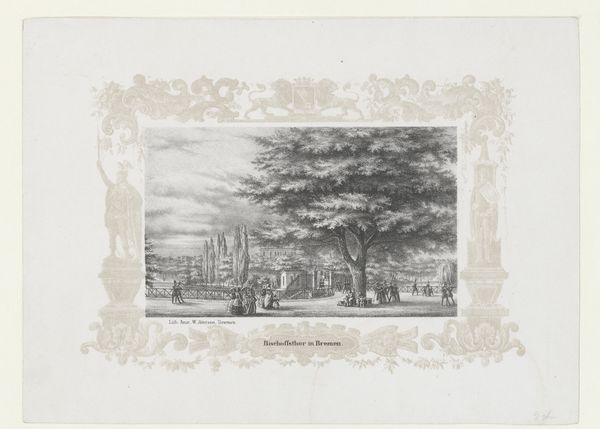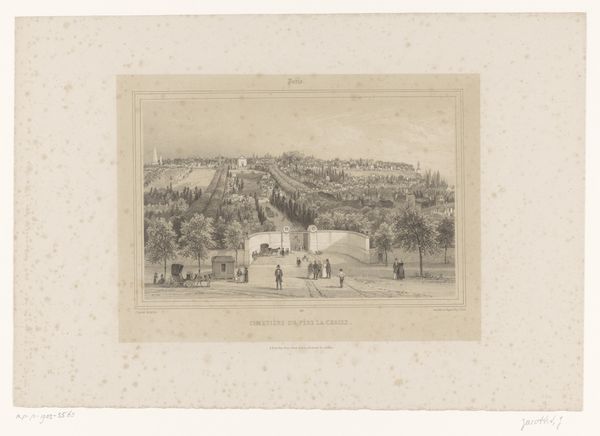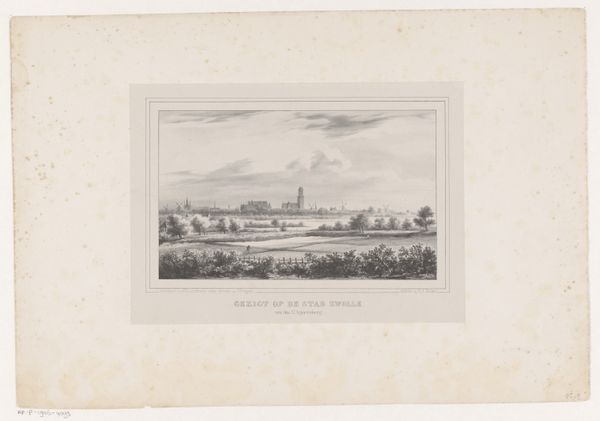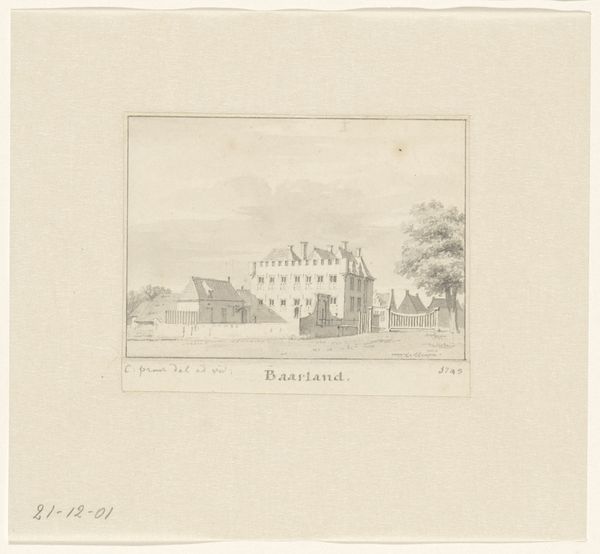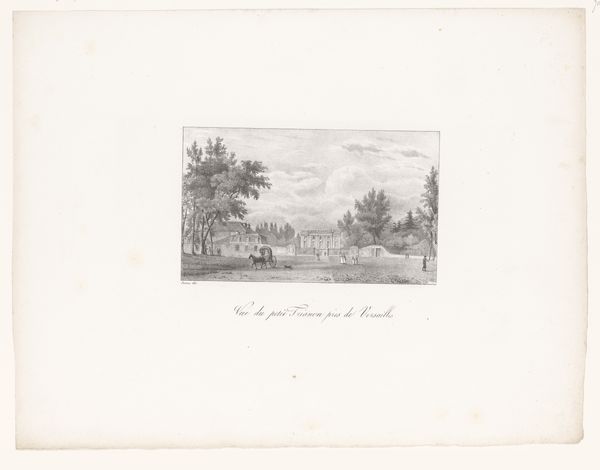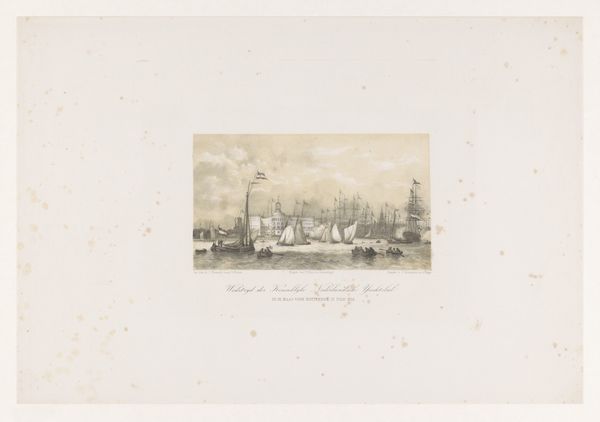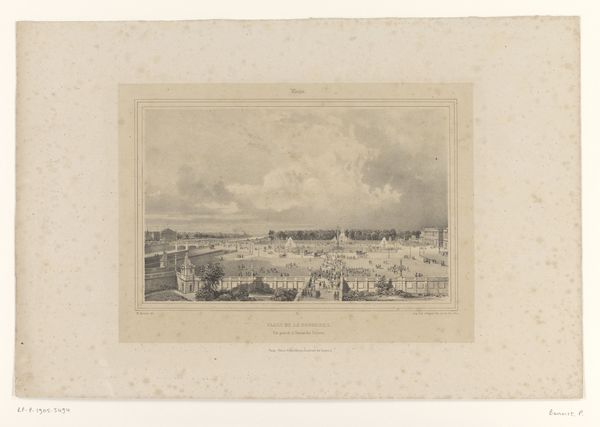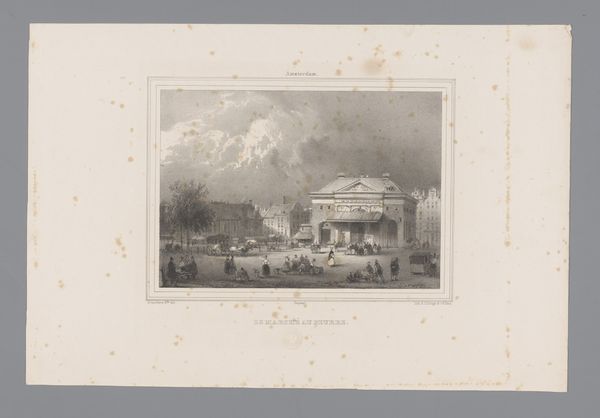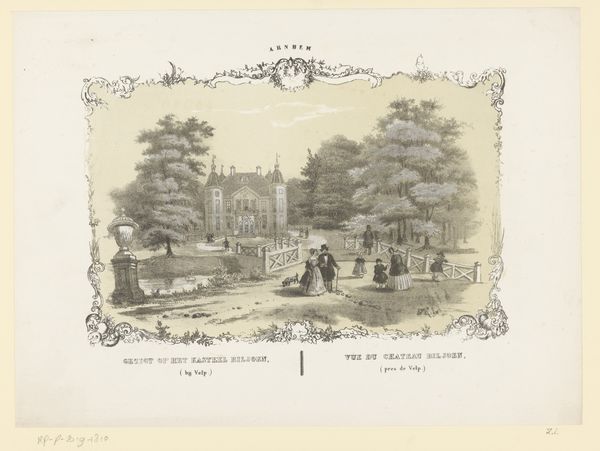
Verblijfplaats van de heer Lemachois en kapel bij de Thermen van Bagnoles-de-l'Orne 1821 - 1831
0:00
0:00
print, engraving, architecture
# print
#
landscape
#
romanticism
#
cityscape
#
engraving
#
architecture
Dimensions: height 208 mm, width 268 mm
Copyright: Rijks Museum: Open Domain
Curator: Looking at this print, titled "Residence of Mr. Lemachois and chapel at the Baths of Bagnoles-de-l'Orne," created between 1821 and 1831 by Charles Louis Malapeau, I'm immediately struck by the idyllic setting, wouldn't you agree? There's such serenity here. Editor: It does possess a certain charm, but the visual language also reads as an intentional articulation of class and power, a display of territory and leisure steeped in Romantic ideology. Curator: Precisely! Notice how Malapeau employs architecture, landscape and hunting imagery to convey that message. The clean lines of the buildings, framing the landscape… there is a harmony of social space and control of nature itself. How do you see that harmony playing out symbolically? Editor: The chapel, of course, anchors the morality of the scene, a visible claim on virtue intertwined with land ownership. Hunting parties symbolize dominance, and the architecture speaks to establishment values and privilege – visually defining inclusion and exclusion in this constructed space. The symmetry almost amplifies this, ensuring these spaces, their architecture and social events occur according to an established order. Curator: I appreciate your interpretation. It really underlines the complex social narratives within these seemingly simple representations of nature and architecture during the Romantic period. And it really emphasizes how even images of idyllic country sides had to serve as reinforcement for societal hierarchies of gender, wealth, class and access. It certainly allows me to see the deeper dimensions now, not only with that era, but as they play out in ours as well. Editor: Ultimately, what seems like a picturesque view holds much deeper symbolism that touches upon culture and the development of our society. Thanks for opening my eyes to the work's complex political context.
Comments
No comments
Be the first to comment and join the conversation on the ultimate creative platform.
